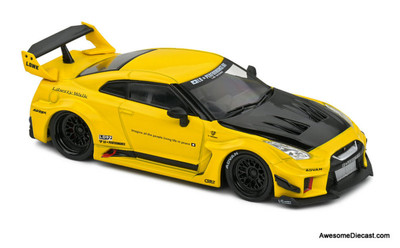The AC Cobra, sold as the Shelby Cobra in the United States, is an Anglo-American sports car with a Ford V8 engine, produced intermittently in both the UK and the US since 1962.
Like many British manufacturers, AC Cars had been using the Bristol straight-6 engine in its small-volume production, including its AC Ace two-seater roadster. This had a hand-built body with a steel tube frame, and aluminium body panels that were made using English wheeling machines. The engine was a pre-World War II design by BMW which by the 1960s was considered dated. Bristol decided in 1961 to cease production of its engine and instead to use Chrysler 313 cu in (5.1 L) V8 engines. AC started using the 2.6 litre Ford Zephyr engine in its cars.
In September 1961, American automotive designer Carroll Shelby wrote to AC asking if they would build him a car modified to accept a V8 engine. AC agreed, provided a suitable engine could be found. Shelby went to Chevrolet to see if they would provide him with engines, but not wanting to add competition to the Corvette they said no. However, Ford wanted a car that could compete with the Corvette and they happened to have a brand new engine which could be used in this endeavor: the Windsor 221 in³ (3.6 L) engine – a new lightweight, thin-wall cast small-block V8. Ford provided Shelby with two engines.
In January 1962 mechanics at AC Cars in Thames Ditton, Surrey designed the "AC Ace 3.6" prototype with chassis number CSX2000.
AC had already made most of the modifications needed for the small-block V8 when they installed the 2.6 litre inline 6 Ford Zephyr engine, including the extensive rework of the AC Ace's front end bodywork. The only modification of the front end of the first Cobra from that of the "AC Ace 2.6" was the steering box, which had to be moved outward to clear the wider V8 engine.
The most important modification was the fitting of a stronger rear differential to handle the increased engine power. A Salisbury 4HU unit with inboard disc brakes to reduce unsprung weight was chosen instead of the old E.N.V. unit. It was the same unit used on the Jaguar E-Type. After testing and modification, the engine and transmission were removed and the chassis was air-freighted to Shelby in Los Angeles on 2 February 1962,[8] By this time the small-block's displacement was increased to 260 in3 (4.3 L).
Shelby's team paired this engine along with a transmission into CSX2000, in less than eight hours at Dean Moon's shop in Santa Fe Springs, California, and began road-testing.
In 1963 to keep production focused on producing cars for Shelby American Inc., the Ruddspeed Ace was discontinued. To supply cars to the European market, AC began to market and sell the Cobra in Europe. Advertisements from the time state that the Cobra was designed to meet the requirements of Shelby American Inc.
A new chassis was required, developed, and designated Mark III. The new car was designed in cooperation with Ford in Detroit. A new chassis was built using 4 in (101.6 mm) main chassis tubes, up from 3 in (76.2 mm) and coil spring suspension all around. The new car also had wide fenders and a larger radiator opening. It was powered by the "side oiler" Ford 427 cu in (7.0 L) FE engine equipped with a single 4-barrel 780 CFM Holley carburetor rated at 425 bhp (431 PS; 317 kW) @ 6000 rpm and 480 lb⋅ft (651 N⋅m) @ 3700 rpm of torque,[10] which provided a top speed of 164 mph (264 km/h) in the standard model and 485 bhp (492 PS; 362 kW) with a top speed of 185 mph (298 km/h) in the competition model.



















